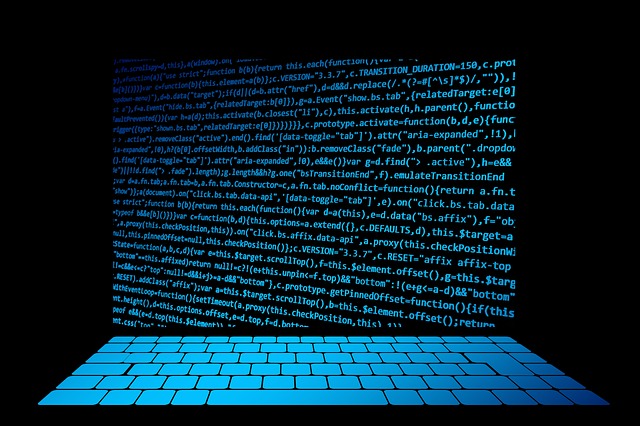
SQL is a structured SQL query and successor programming language developed by IBM and used to communicate with databases to store, query, and manipulate data. C + + is a universal programming language with estimated 44 million developers. Its greatest strength lies in its ability to expand and run resource-intensive applications faster, making it the most popular programming language for 3D games.
It is one of the most popular programming languages in the world and is used by over 97M developers. Solidity, the programming language for smart contracts and smarten. bitcoin.wiki org shows in detail how solidity is a contract-oriented programming language for the writing of smart contracts. Solidity is used to implement smart contracts on different blockchain platforms. Ethereum has a head start in smart contracts, but many alternative blockchain platforms assure that they have solidity, a new and simple programming language that is popular and compatible with Ethereum developers, making it possible to port smart contracts from Ethereum to their new blockchain networks.
An early virtual currency that enjoyed huge popularity and success, Bitcoin inspired probabilistic programming languages like TensorFlow and a host of other cryptocurrencies in its wake. Unlike fiat currencies, bitcoin is created, distributed, traded, and stored using the Bitcoin SV programming language. Programming languages in Bitcoin are a topic that is often sought and liked by netizens.
Here is a summary of the different languages and the projects they use, which should serve as a basic understanding and basis for those wishing to immerse themselves in the industry. If you are looking for a programming language for Bitcoin, images, information, and links about it are of interest to you, visit the ideal site. If you’re a software developer or programmer, you’ve probably heard of blockchain. In this article, we will take a look at cryptocurrency projects and the languages they use.
The most popular programming languages for developing blockchains are Java, C #, JavaScript, Go, Python, Ruby, and Solidity. When it comes to the contents of transactions in Bitcoin, scripts are the most basic programming language for the computing process. For transaction processing, developers use scripts to create complex contracts and decisions based on transactions.
This is because there is no formal verification using mathematical concepts and functional languages are very close to mathematical principles. Mathematicians feel comfortable working with FP because they can easily apply programming concepts derived from algebraic structures such as monads, subfunctions, and defined theoretical concepts. The documentation suggests that the language is still in development and not yet ready for general use. It should be acknowledged that C + + is the predominant language for Bitcoin core operations. C + + programs are compiled with a C + + compiler, which has caused many developers to mix the two languages.
After the first developer meeting of the Simple Ledger Protocol (SLP) (SDP) ( ) meeting, the BCH programmers met for the first script meeting on the next day. BCH developers planned to talk about how to improve the scripting language for Bitcoin Cash and discuss reasonable optimizations. Following this meeting, the developers met on January 23 to discuss feasible optimizations for the language. Thursday’s SLP Developer Meeting was hosted by David R. Allen, a software engineer, who talked about Bitcoin Cash and the Script Roadmap. BCH developers Amaury Sechet and Mark Lundeberg gave feedback and suggestions for the roadmap.
The Aeternity blockchain supports Varna, a basic language inspired by the simplicity of Bitcoin scripts. Varna and Ethereum let you write code that specifies states and transitions between them. In other words, Varna is comparable to creating flowcharts and workflows in which contracts between different states are pushed back and forth until the end of a term is fulfilled. It depends on the cryptocurrency you want to create, the type of functionality and features you are looking for, and the characteristics of the token or coin.
In a recent podcast interview, C + creator Bjarne Stroustrup took a moment to explain how he feels that programmers can use his programming language for a variety of applications. David is a tech journalist who loves old-school adventure games like Techno and Beastie Boy. Blockchain Programming Programming in C + + is a free book by GitBook and is available here as PDF, EPUB, and Mobi versions.
Bitcoin mining is a secure way to not only earn bitcoin but also receive transaction fees for each block. A script is valid if the top and only remaining element on the stack is 1 or greater. The complete unlocking and locking of the script are valid as long as the output is enabled and output.
Once the unlock script has provided the initial lock script, we can drop it before executing the two scripts. The node combines and executes both scripts to ensure that they are validated. We first execute the full script, then the activation, and then return to the lock script. You can unlock by providing two different data strings to get the same hash result. You just have to hash out the same result twice. This script wraps around the p2sh lock script, so you will not see it before the lock script.
A common programming language, which is not often mentioned in the context of blockchain projects, appeals to developers to use it by opening an API and releasing sample code for the target API. All you have to do is write your code, fill in the fields and publish it, which means you can use any language library that makes it easy to send HTTP POST messages.
Also read: How are PayPal and Crypto Connected?

